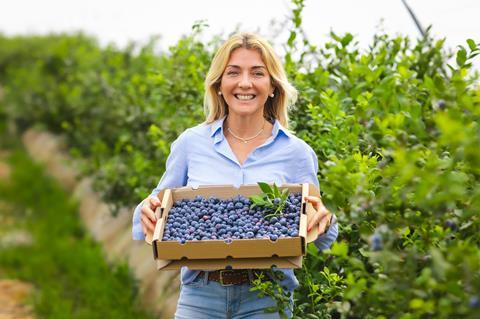Overall planted area will fall by almost 5 per cent next season, says Freshuelva
Berry plantings in the province of Huelva will total 11,243ha for the 2023/24 campaign according to Huelvan berry association Freshuelva. This represents a decline of 4.75 per cent compared to the previous season.

The area planted with strawberries is down 3.1 per cent at 6,100ha. Freshuelva said the high temperatures at the beginning of the planting phase and Storm Bernard that affected the province in the middle of the work, meant replanting was not completed until almost at the end of November. However, subsequent rains have contributed to the proper development of the crop.
The area planted with blueberries remains more or less the same, with a slight increase of 0.5 per cent to 3,610ha. A wider range of varieties means harvesting will begin in December in time for the Christmas holidays, allowing the region to gain market share from South American supplier.
“Blueberries have consolidated their position as the second most widely planted berry in our province behind strawberries, despite the fact that they also face significant competition from third countries, particularly during the spring months,” Freshuelva said.
The planted area for blackberries has grown 7.5 per cent to 153ha. Again, new varieties are extending the season and improving fruit quality.
By contrast, raspberry acreage has experienced a significant decline, with plantings down 21.5 per cent to 1,380ha. Production is split into two harvests, one in the autumn and the other in spring.
“Raspberries are the berry that has been most affected by Storm Bernard, which caused serious damage to plantings and will potentially impact autumn production to a large extent,” Freshuelva said.
The association said the planting figures highlighted the province’s ongoing commitment to diversification, thereby guaranteeing the presence of Huelvan berries in the market for almost the entire year.
Freshuelva noted that the new campaign is plagued by uncertainties and adverse situations, chief among them the ongoing drought that is affecting the entire country, the unstoppable increase in energy and input costs and the unpredictable weather.



